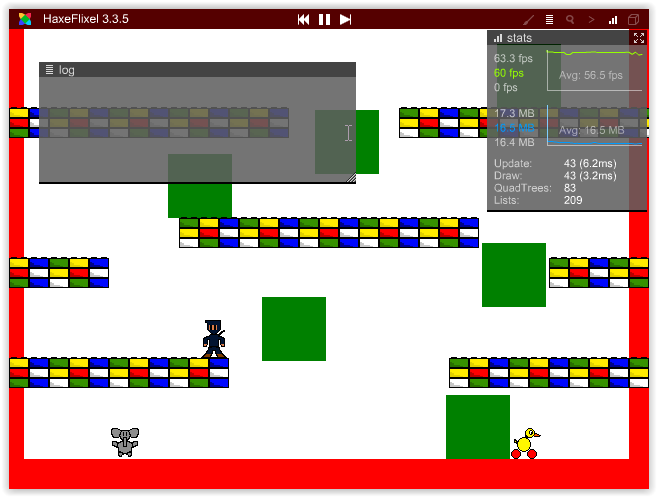In this entry I'm gonna be analyzing a small, free to play game that I found on Steam:
Depression Quest.
I first stumbled across this game a few days back and it immediately caught my attention. It's a very short story with the objective of making the reader feel in the shoes of a person struggling with depression, in the creators own words "we want to illustrate as clearly as possible what depression is like , so that it may be better understood by people without depression". I found this to be a very noble cause and certainly a step in the right way towards making games achieving more than just entertainment. However due to the nature of the game I've found some controversy regarding whether this should be considered a game at all.
In the next few paragraphs I intend to first, explain why it can and should indeed be considered a game according; and second, I will attempt to deconstruct it's mechanics to find what makes this experience what it is.
Before I proceed however I'd like to clarify specially that I'm not deconstructing this game in an attempt to diminish the experience; all the opposite. I believe that by deconstructing and analyzing games as this one I can go forward into understanding how to create experiences like this and thus create better games that are able to transmit important messages such as this one.
About the game:
The game itself is very simple mechanically, it could be stripped down to basically being a text based story that uses hyperlinks to allow the player to choose the next course of action. The game starts with the next screen.
It presents an introduction to the character's current state in life, as well as background information that's meant to give us a solid idea of the character's life style, personal relationships, etc. It is however in the next screen when we find a few more mechanics that help setting the tone the game is trying to achieve. Now this screen contains all the elements that make up the actual game experience.
From here it's quickly noticed it contains three main parts. First we have the text, the actual "adventure" that we're reading upon. Below that we can find a series of available choices for the character to take. So far nothing out of the ordinary; however upon looking up the first choice it's not selectable. The screen above it's the first one when we are presented with choices and we are already restricted, and that is precisely the point of the game.
What the game is trying to achieve is to make the player understand that depression it's not a choice, people struggling with the disease don't get to choose the first option, because they simply can't and they express this mechanically within the game, effectively using the mechanics within the game as a metaphor for what the disease it's like.
Moving on to the next part we have three paragraphs that are meant to show things the current player's state. They define in this three sections three main aspects of the player's life, the mental state, the therapist and the medication state.
I would like to continue further on what I think about it and how I think it could be improved, however this being an analysis rather than a review I will continue to deconstructing using a game design framework. But first, let's tackle the elephant in the room.
Is this even a game?
To answer this question I had to go back to re-reading one of the first books on game design I read and that I fully recommend:
Rules of Play. As the books attempts to explain the most basic concepts on game design one of the first subjects it tackles it's precisely the question of what a game is. The authors of the books analyse and present the definitions of game as presented by eight authors. While it is a good read I will not get into the details of it and just jump right into the conclusion they reach in an attempt to probe Depression Quest can indeed be considered a game.
According to the authors of Rules of Play "A game is a system in which players engage in an artificial conflict, defined by rules, that result in a quantifiable outcome"
Now let's dissect that sentence and try to apply it to Depression Quest.
1) Is Depression Quest a system?
First of all we have two different approaches to this question. As a computer program it certainly could be considered a system consisting parts such as variables, procedures, etc. that make up the game executable. But more importantly Depression Quest it's a game system: it contains mechanics (as the ones I explained before) that serve the purpose of creating a dynamic experience that is intend to express a certain aesthetic.
2) Does Depression Quest have players?
While it may seem an obvious question it is still worth noticing due to the nature of the game that the simple fact that you can choose your own path turns you into a player. Take for example a book: when you read, are you 'playing' the book? Because the book it's certainly a system so, so far Depression Quest might as well be a book. Well... no, the main difference between reading a book and playing a game like this one lays in the fact that you get to choose what happens next. As simple as it may be this small mechanic turns this in a completely different experience as you are no longer a passive reader, you get a word on what's happening in the story and you are left to choose the character's destiny.
3)Is Depression Quest artificial?
This is an interesting question. In the first screen at the beginning of this entry you can clearly see the text "(non) fiction". My answer to this question would be: While depression it's not artificial at all but rather a very real struggle for many; Depression Quest is indeed an artificial experience, one meant to artificially make you feel, a real situation. At the end of the game you are back to your normal life, you are not really the character you read about.
4)Does Depression Quest have a conflict?
Depression Quest, has indeed a conflict, it may not be as obvious as let's say Mario trying to defeat Bowser. It doesn't have an enemy to defeat or a location to reach. But it does have a conflict in the form of trying to tackle the everyday issues, in this case the conflict is all about you as a player trying to choose the best outcome for your avatar while limited by the effects of depression.
5)Does Depression Quest has rules?
At a very basic level, yes it does. Again, as this game genre has so much similarities to a book it might be mistakenly considered as a similar experience however looking back at the play screen we have at least one rule that serves the game experience, that is the fact that you can't choose some of the choices. Another 'invisible' rule is the fact that the more depressed the character is, the less choices you have.
6) Does Depression Quest has a quantifiable outcome?
Now this one is problematic, the short answer is: No, it doesn't. However in this point I have to disagree with the definition. While a quantifiable outcome may be a huge deal with some types of games; as games have evolved further we have many games that don't have something like that and still manage to be considered games. Just think let's say: The Walking Dead, Thomas was Alone, Silent Hill.
So. to sum up everything. I believe that despite it's serious nature and it's simple mechanics; Depression Quest is and should be considered a game, or as they put it an interactive experience, one that does a good job expressing it's point.
Classification
I would like to classify the game using an MDA variation known as
MGD. More specifically I'd like to apply the 'types of engagement ' part of the framework.
In case you haven't heard of it. MGD similarly to MDA pretends to classify the game experiences by the type of experiences the game is trying to achieve on the player, for this purpose MGD uses 10 types of engagement types and it's sub-variations. A game normally has two or three of this however there's one that's more predominant. To find out more about this framework follow the link.
In Depression Quest case I'd dare to say it classifies as:
1) Drama:
More specifically as tragic drama. However I should make a note, I don't classify it as tragic drama due to the nature of the game but rather do to the fact that according to MGD, a drama based experience is
"The experience or observation of the fates and fortunes of life." and more specifically tragic drama tends to focus on sympathy, which is what the game designers where trying to achieve.
Conclusion
I believe Depression Quest is a very good game that does a good job at what it sets out to do. As simple as the mechanics are, it's not hard to see trough them and the meaning they are trying to convey to the player, the fact that is a text based game makes it very easy to create the content of the game without having to invest too much time, money or resources.
Still I believe there is room for improvement, while the main mechanic of the game does a good job expressing the fact that there are things you just can't do, as a player you reach a point where you ignore those options all together making it loose some of the effect it had at the first screens of the game. Same could be said about the three paragraphs at the bottom, their location as well as the fact that they are merely informative and don't really serve a purpose to the game make it very easy for the player to ignore them completely.
Finally, as an aspiring game designer what this games leaves me is: Simple mechanics when used to serve the game aesthetic feeling can have a huge impact on the game experience, especially when used as metaphors for what you're trying to convey.
















